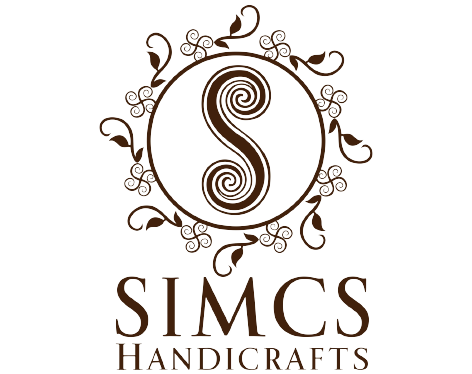Introduction:
The process of saying farewell to a loved one is undoubtedly a challenging and emotional journey. As we navigate the intricate details of memorializing someone dear, one critical consideration is often overlooked until it becomes essential: choosing the right size urn. This guide aims to provide comprehensive insights into the factors influencing the selection of an appropriately sized urn, ensuring a fitting tribute to the departed.
Different types of cremation Urns:
To embark on this poignant journey, it is crucial to first understand the diverse array of cremation urns available. Each type serves a unique purpose, catering to various preferences and circumstances.
Traditional Urns:
The classic elegance of traditional urns often appeals to those seeking a timeless memorial. Crafted from materials such as metal, marble, or wood, these urns come in a variety of shapes and sizes. Families can choose a design that resonates with the personality and style of the departed, creating a lasting tribute.
Biodegradable Urns:
In an era increasingly focused on environmental consciousness, biodegradable urns offer a sustainable option for those who wish to return the ashes to the earth. Crafted from materials like recycled paper, salt, or even plant fibers, these urns break down naturally over time, allowing the remains to become part of the earth once more.
Keepsake Urns:
Keepsake urns or you can say mini urns are used For families who wish to share the ashes among multiple individuals or keep a small portion as a personal memento, keepsake urns are an ideal choice. These smaller urns come in various styles, mirroring the design of traditional urns but on a more intimate scale.
Cremation Jewelry:
Cremation jewelry takes memorialization to a personal level, allowing individuals to carry a small amount of ashes discreetly. These miniature urns come in the form of pendants, bracelets, or rings, offering a tangible connection to the departed that can be worn every day.
Understanding these different types of urns is the initial step in making an informed decision about the most suitable vessel for your loved one's final resting place.
Body Weight and Volume:
One of the most critical factors influencing the size of the urn required is the body weight of the deceased. The correlation between weight and volume serves as a general guideline in determining the appropriate urn size.
Calculation Method:
Typically, crematoriums and funeral directors use a simple formula where one pound of body weight is equivalent to approximately one cubic inch of ashes. For instance, if the departed weighed 100 pounds, you would generally require an urn with a capacity of at least 100 cubic inches.
The capacity of an urn to hold ashes is typically measured in cubic inches.
Keepsake Urn Capacity :- 3 lbs. Cubic Inch of ashes Or 3 Tablespoon of Ashes . Approximate 3" inch in sizes
Large Urn Capacity :- 200-220 lbs. ashes. Approximate 9" inches in sizes
Medium Urn Capacity :- 100 to 150 lbs. cubic inch of ashes . Approximate 8.5" inch in sizes.
Extra Large Urn Capacity:- 290 to 320 lbs. cubic inch of ashes. Approximate 11.5" - 13" inches in sizes
Consultation with Professionals:
To ensure accuracy in your decision, it is advisable to consult with the crematorium or funeral director responsible for handling the cremation process. These professionals can provide precise information about the volume of ashes and guide you in selecting an urn that accommodates this volume comfortably.
Considering Room for Personal Items:
While determining the appropriate size based on weight is essential, it's also wise to consider if you plan to include any personal items within the urn. Some families choose to place letters, small trinkets, or other meaningful items alongside the ashes. In such cases, opting for a slightly larger urn than the calculated volume may be prudent.
Personal Preferences:
Beyond the practical considerations of size, the emotional aspect of choosing an urn is equally significant. Taking into account the personal preferences and wishes of the departed, as well as the sentiments of the grieving family, adds an extra layer of meaning to the selection process.
Reflecting the Deceased's Personality:
Consider the personality, hobbies, and interests of the departed when choosing an urn. Traditional urns can be customized to reflect specific themes or interests, adding a personal touch to the memorial. For instance, if the person loved nature, an urn adorned with floral or landscape motifs may be fitting.
Cultural and Religious Considerations:
Respecting cultural or religious practices is paramount when selecting an urn. Different cultures have varying traditions regarding the size, style, and material of urns. Consult with religious leaders or cultural guides to ensure the chosen urn aligns with these beliefs.
Incorporating Memorialization Techniques:
Some families may choose to further personalize the urn by incorporating memorialization techniques. This could involve engraving the urn with the departed's name, dates, or meaningful quotes. Such additions enhance the significance of the urn as a lasting tribute.
Summary:
In the intricate tapestry of mourning, the selection of an urn stands as a poignant symbol of remembrance. By understanding the types of urns available, considering the relationship between body weight and volume, and incorporating personal preferences, families can embark on this journey with thoughtful consideration.
Remember that the choice of a funeral urn is a deeply personal one, a vessel not just for ashes but for memories, emotions, and the enduring connection to those we hold dear. Once can explore SIMCS Handicraft's unique teardrop urns for their loved ones ashes because it looks more like an ornament then just a regular ash container.
